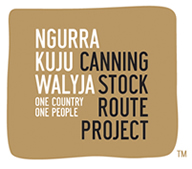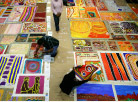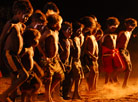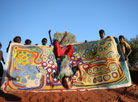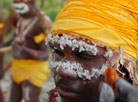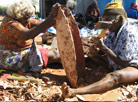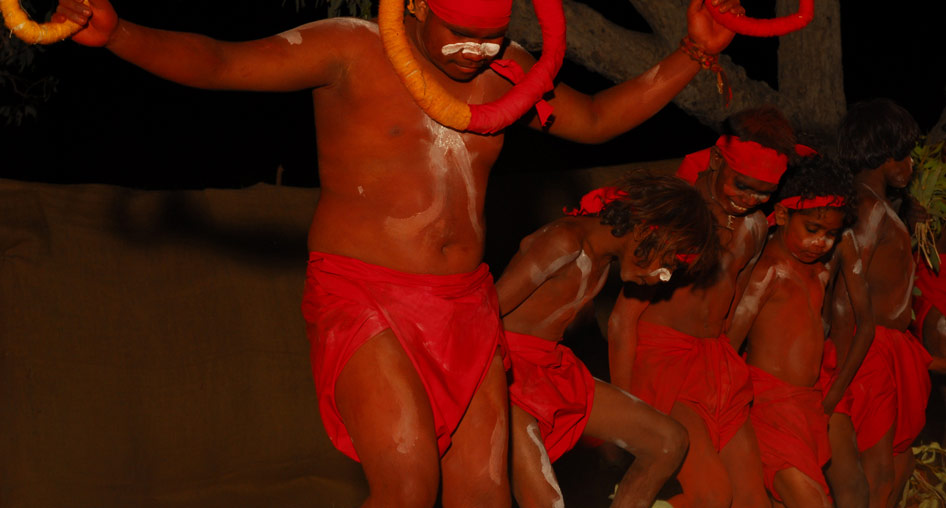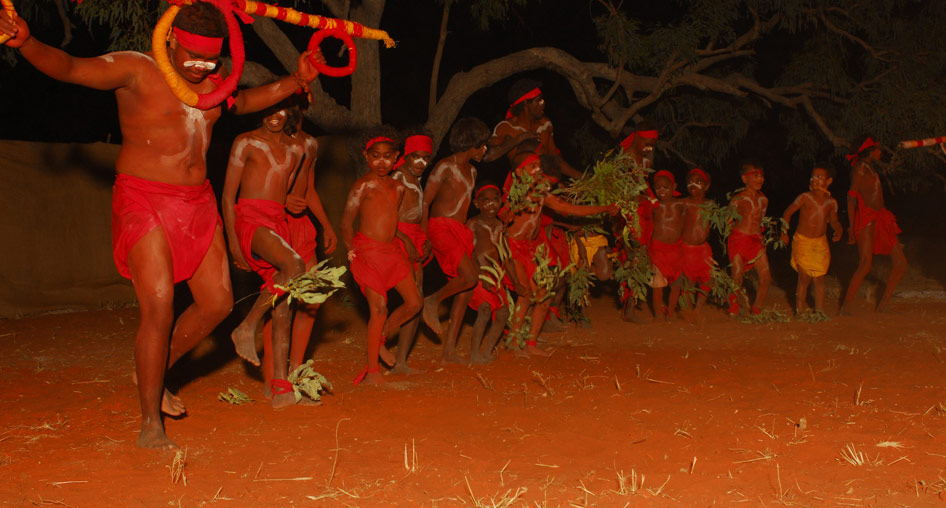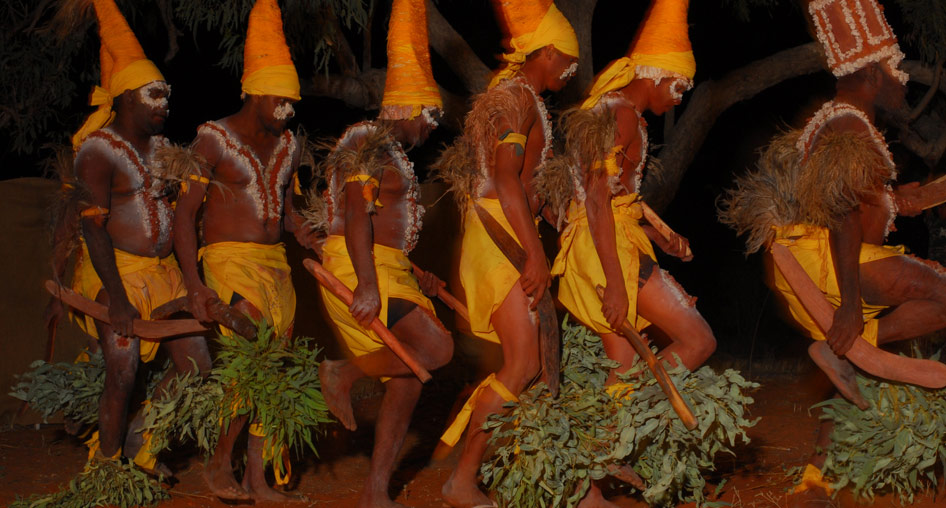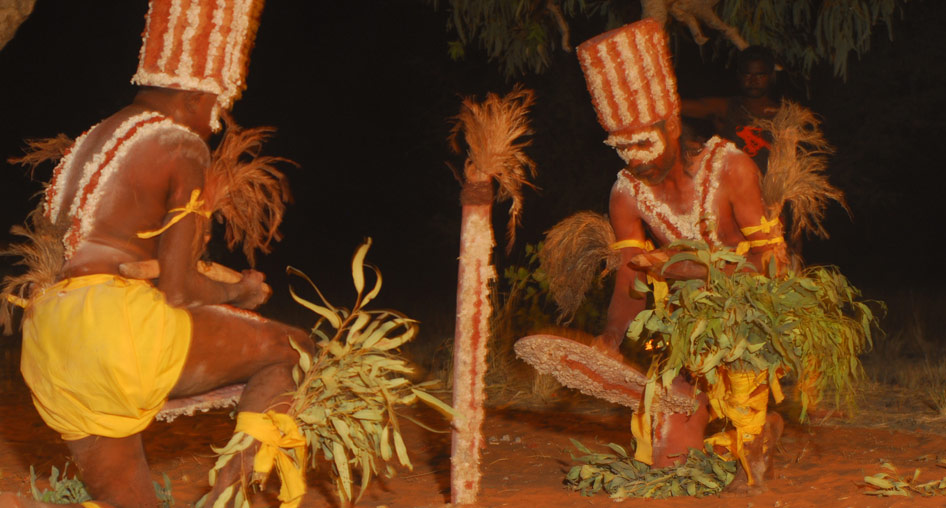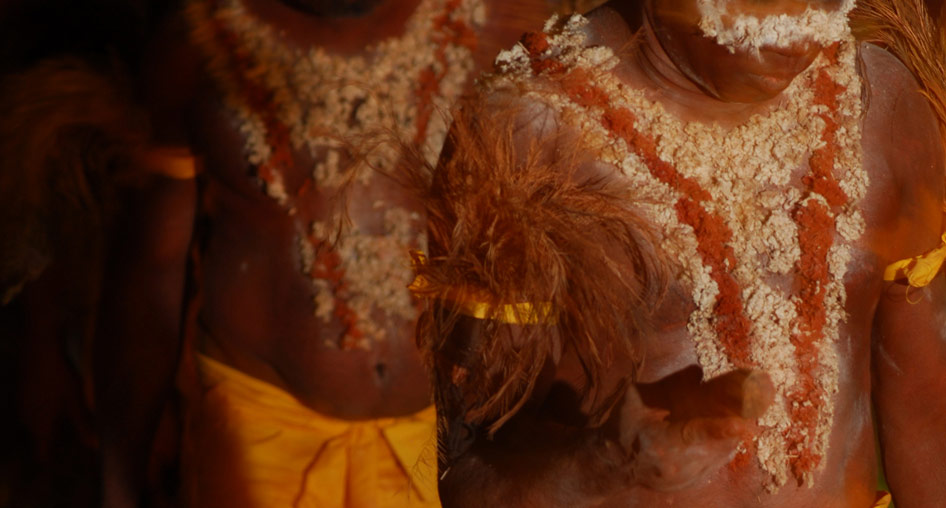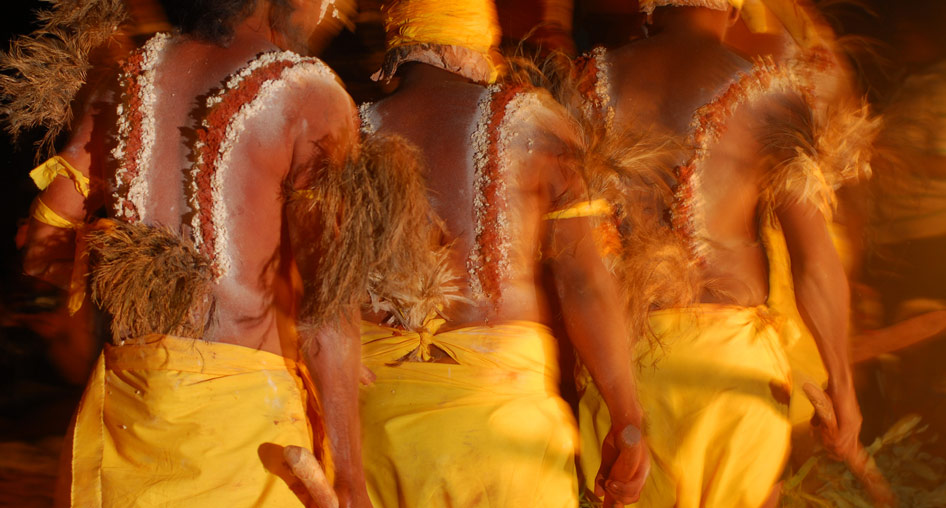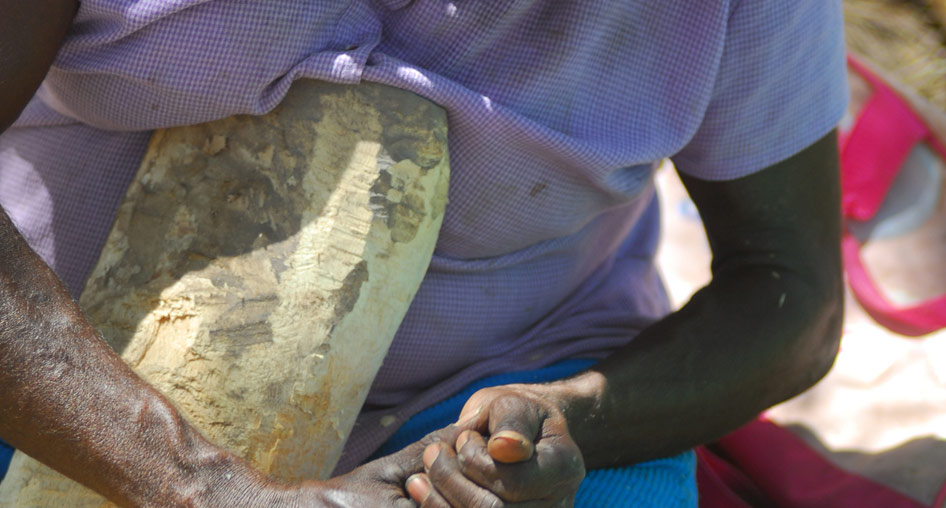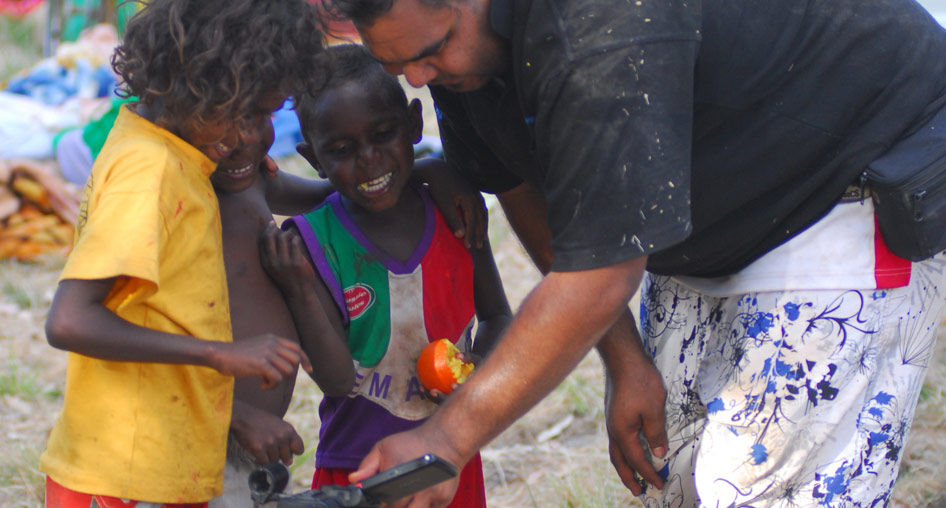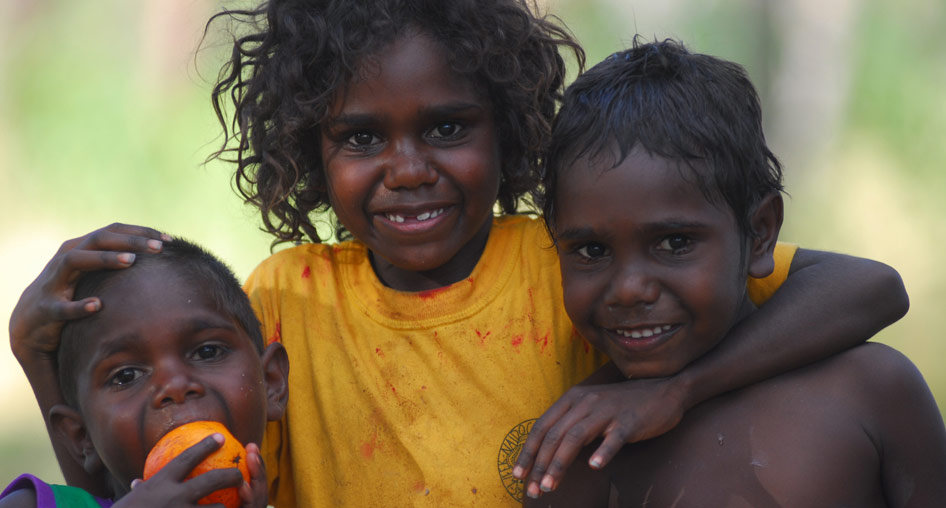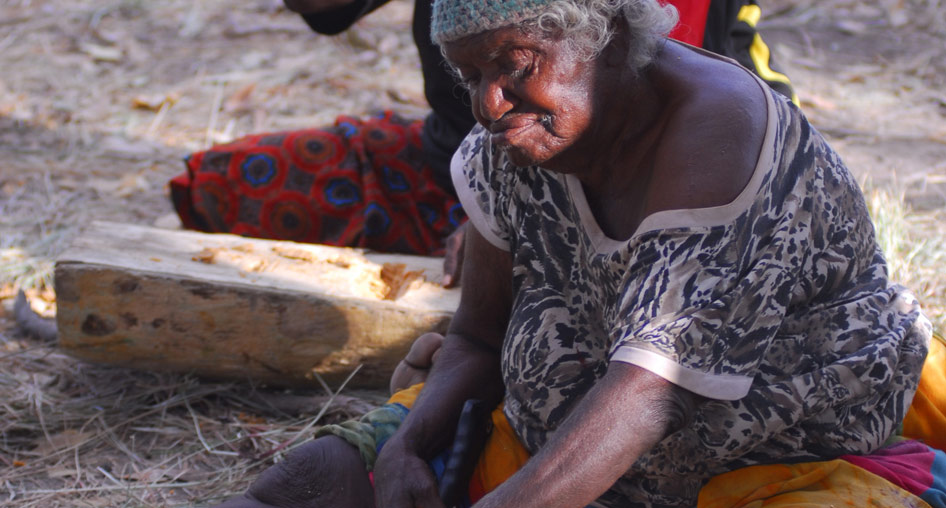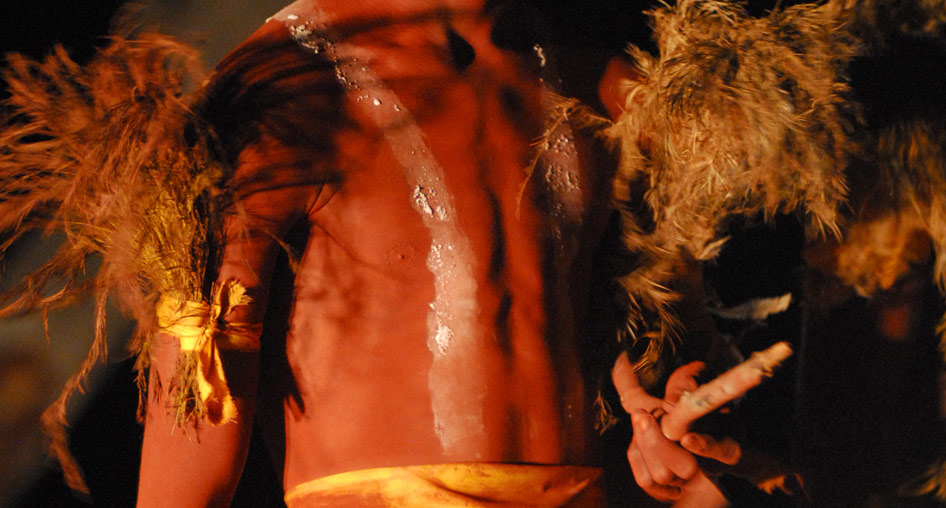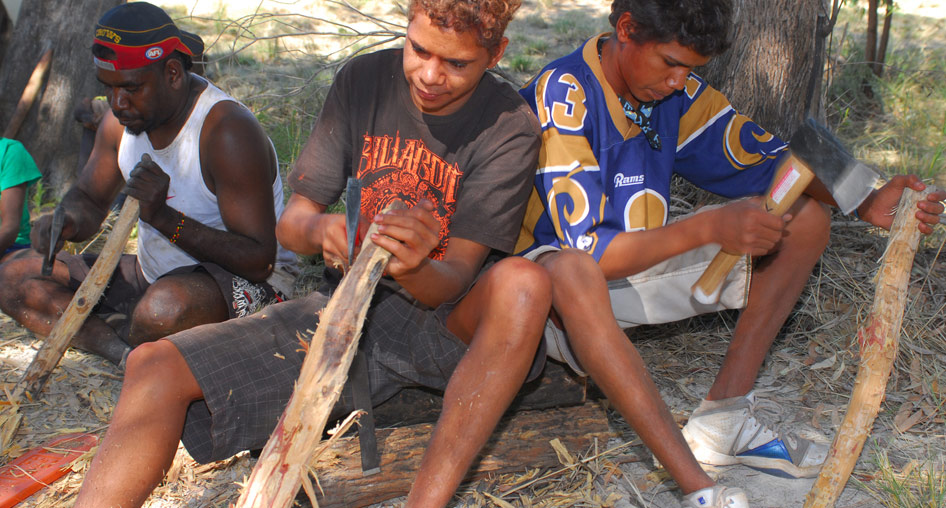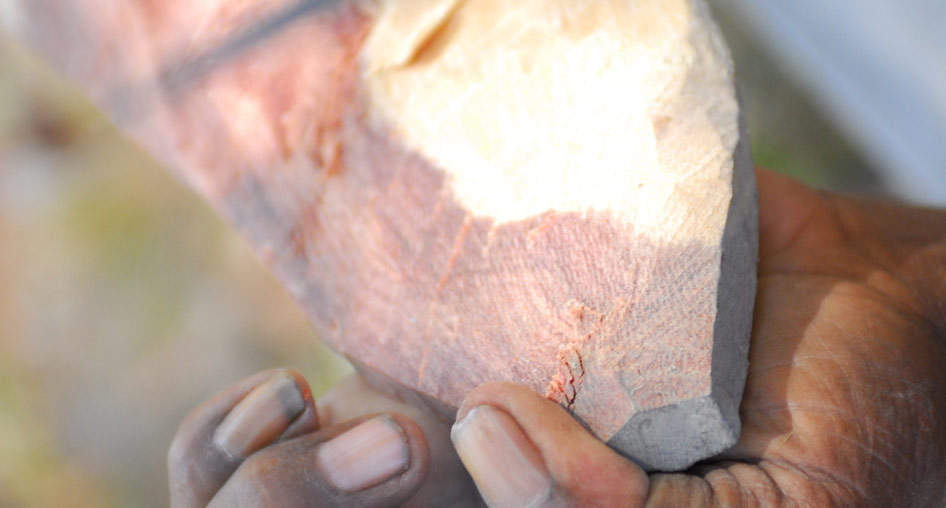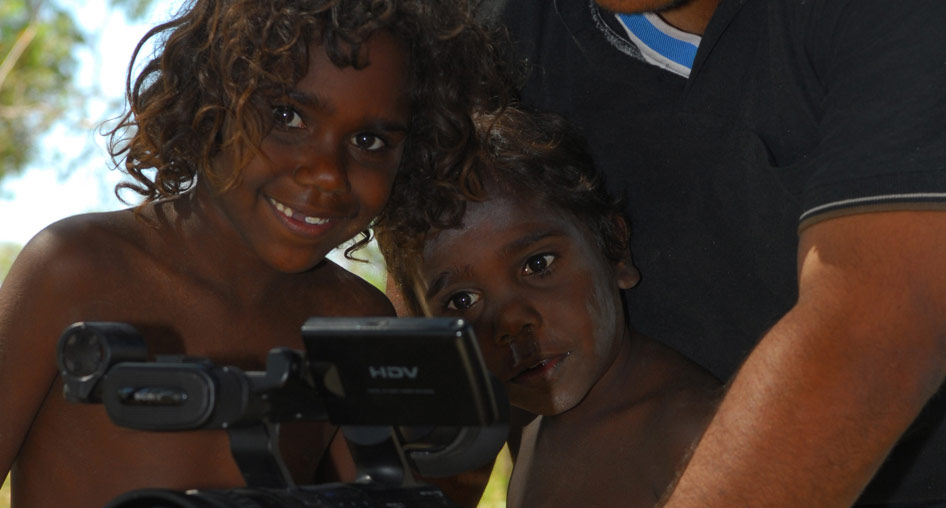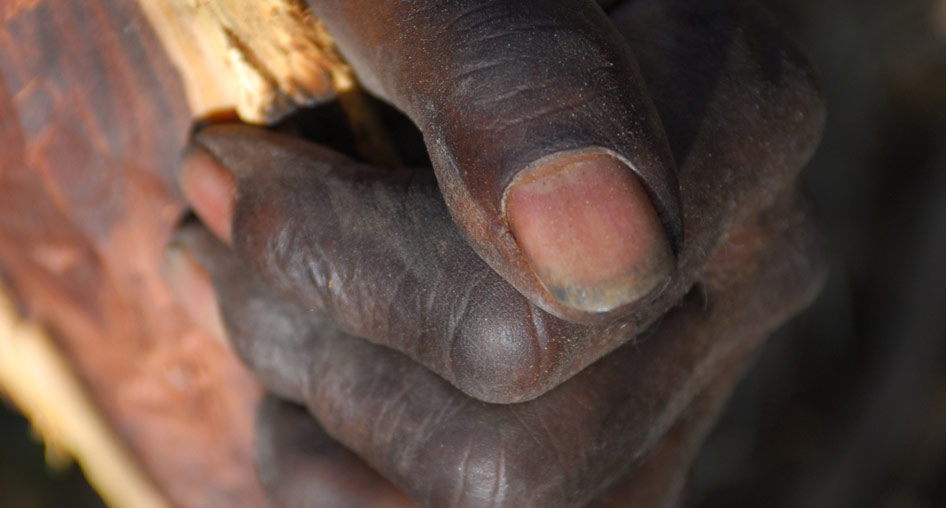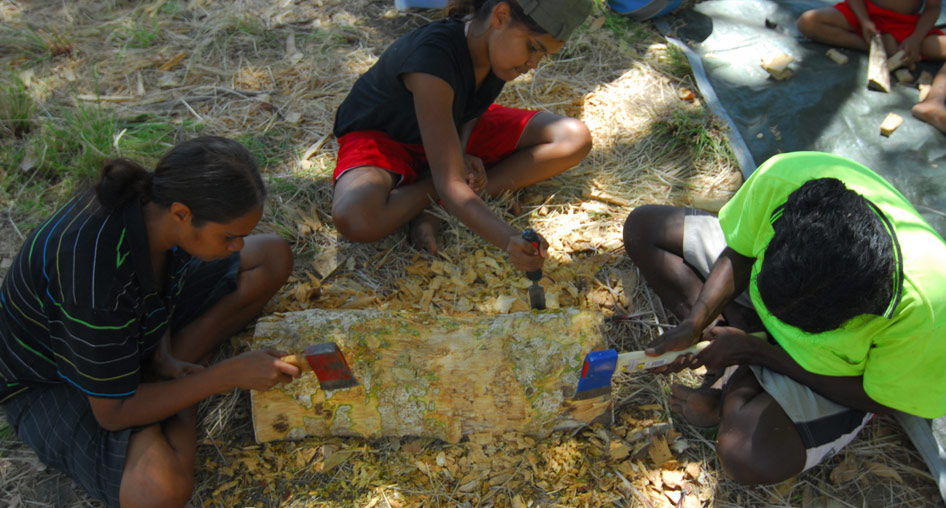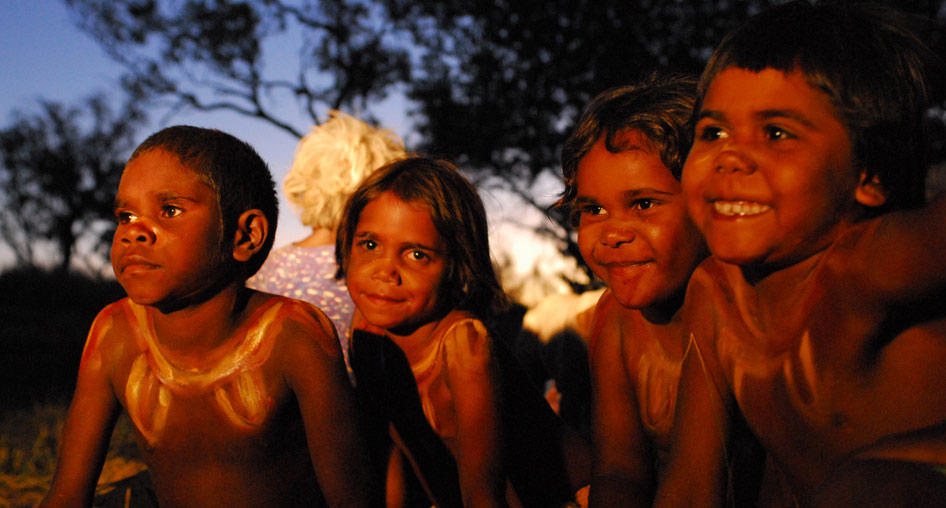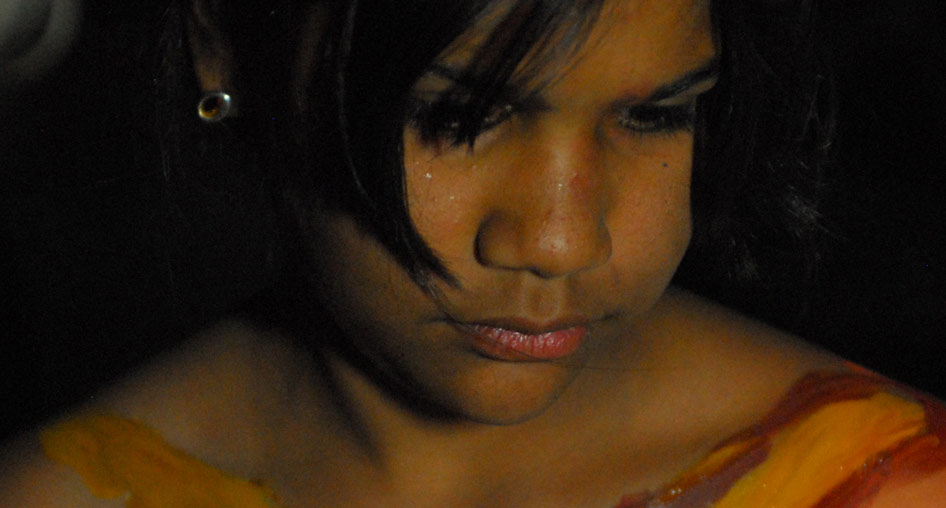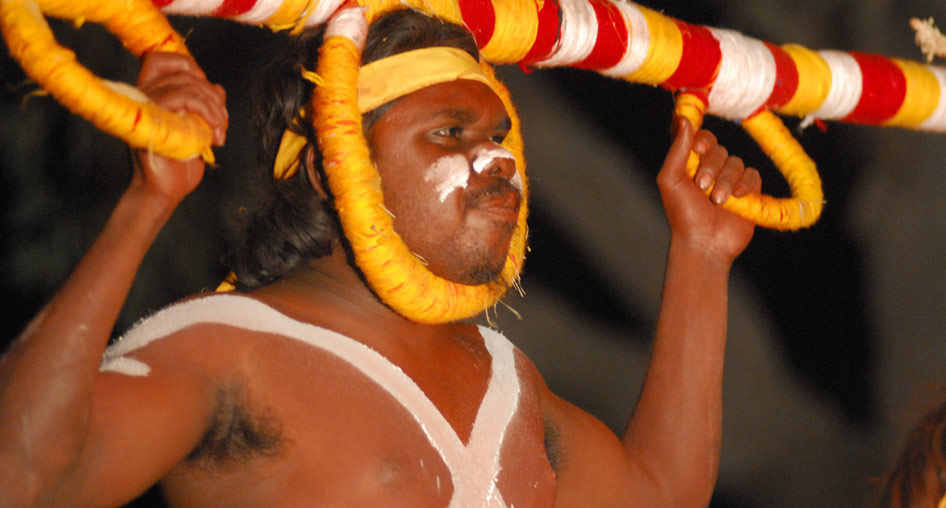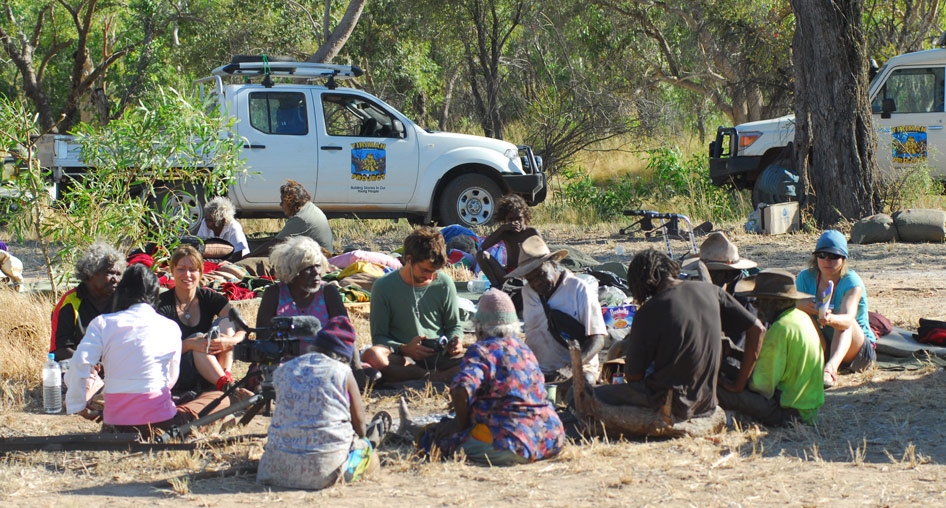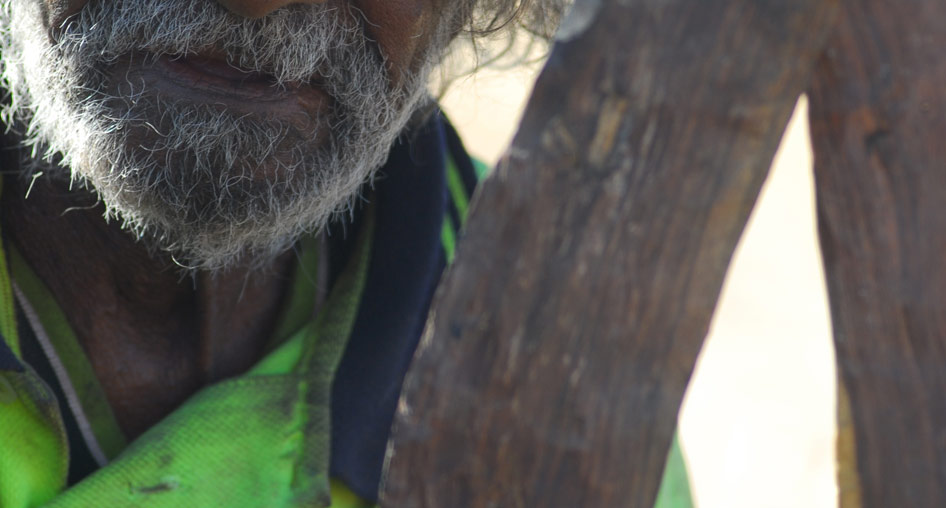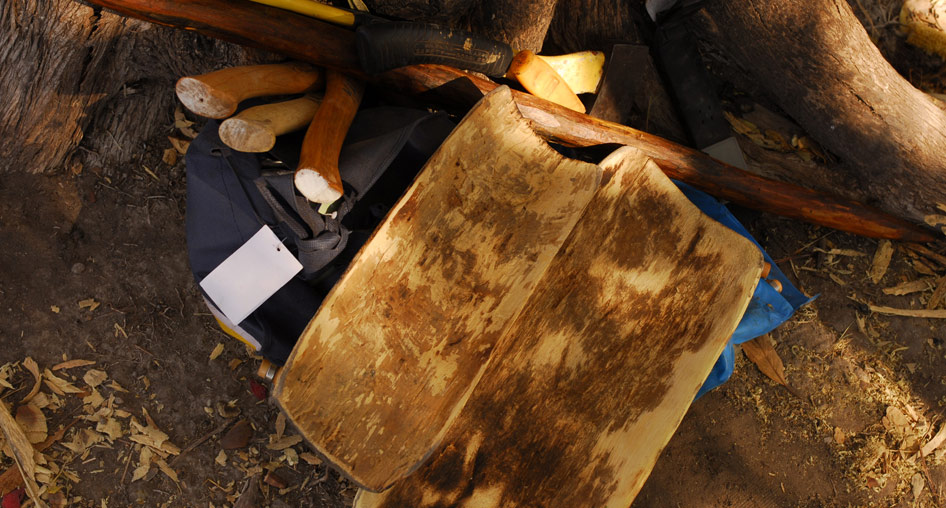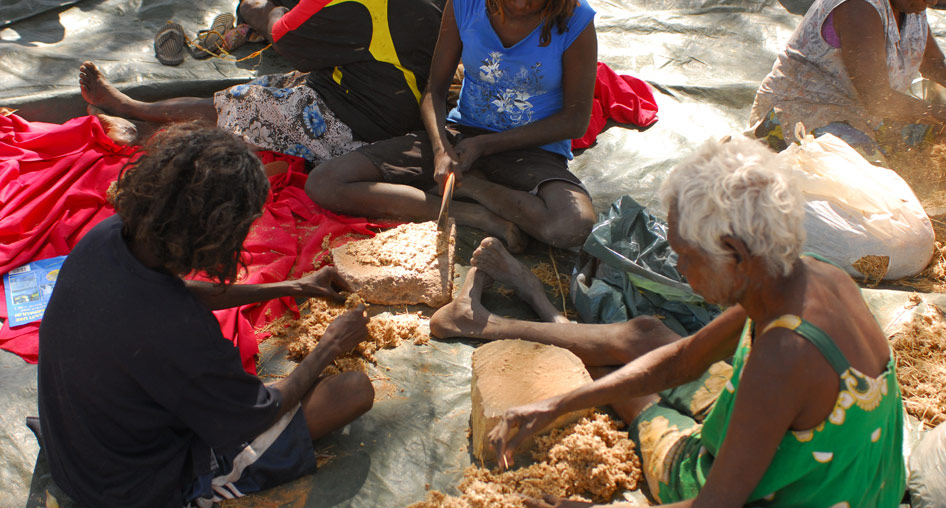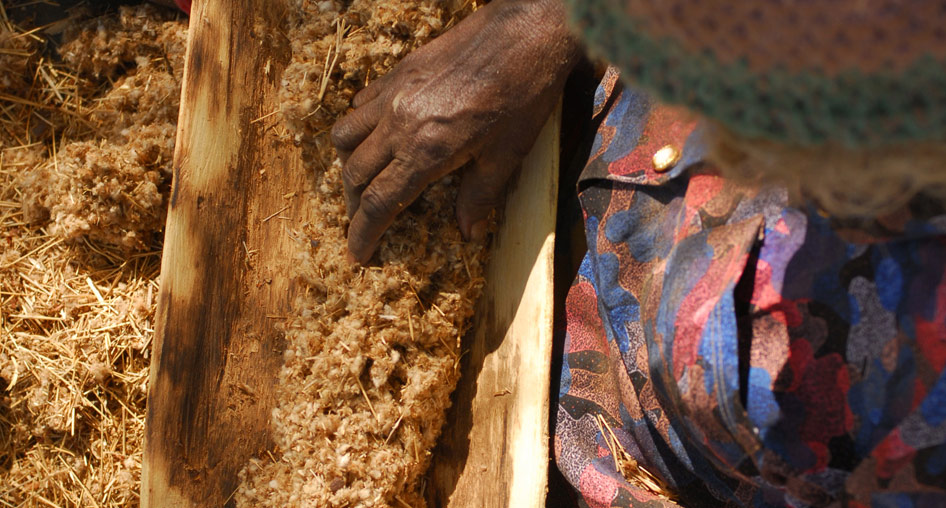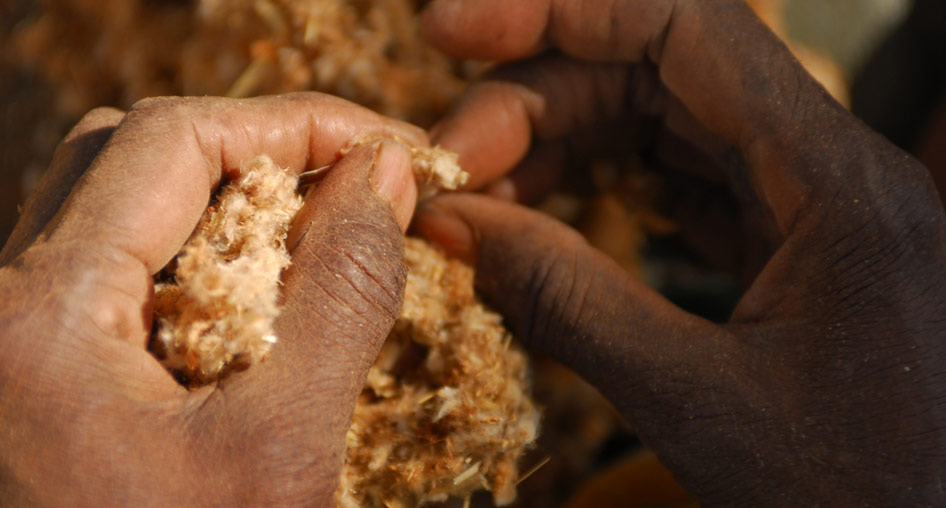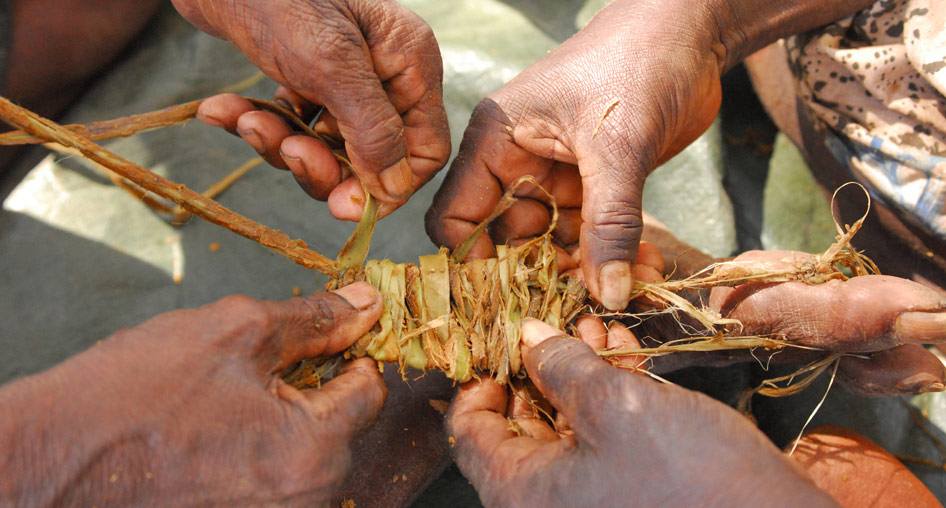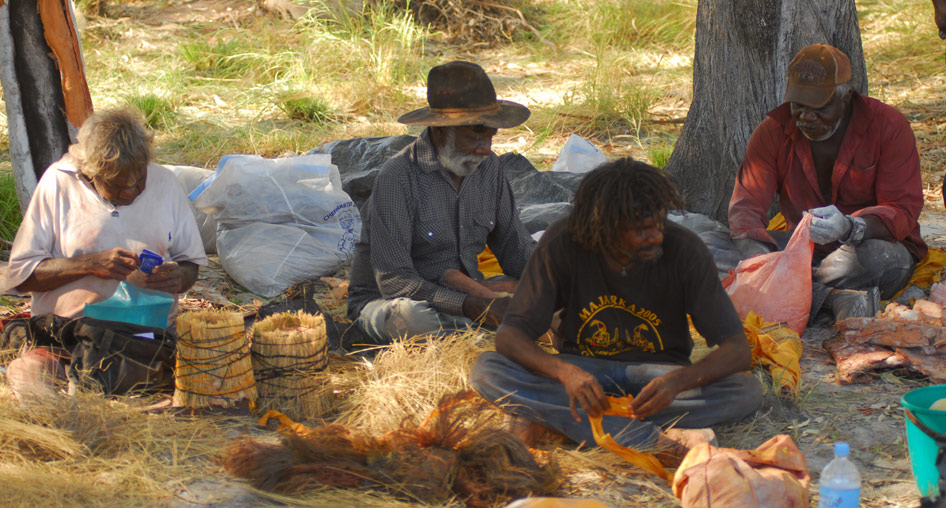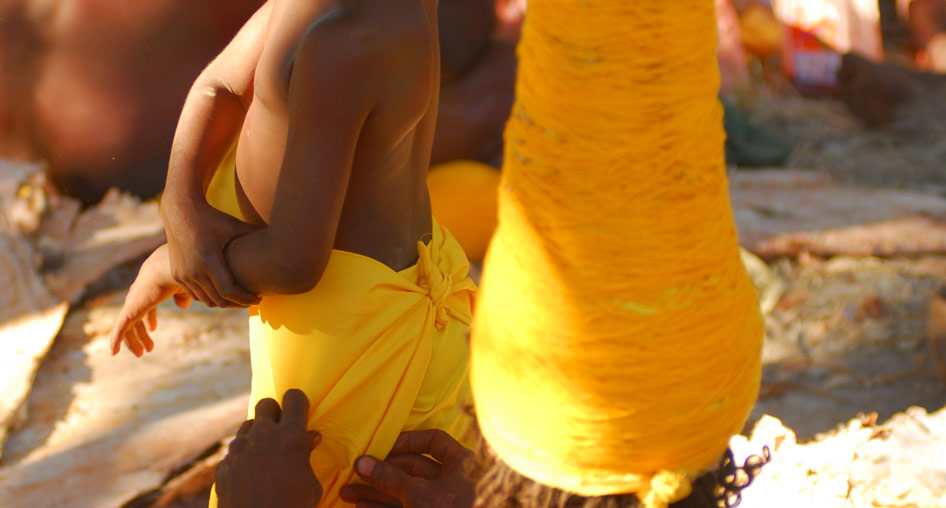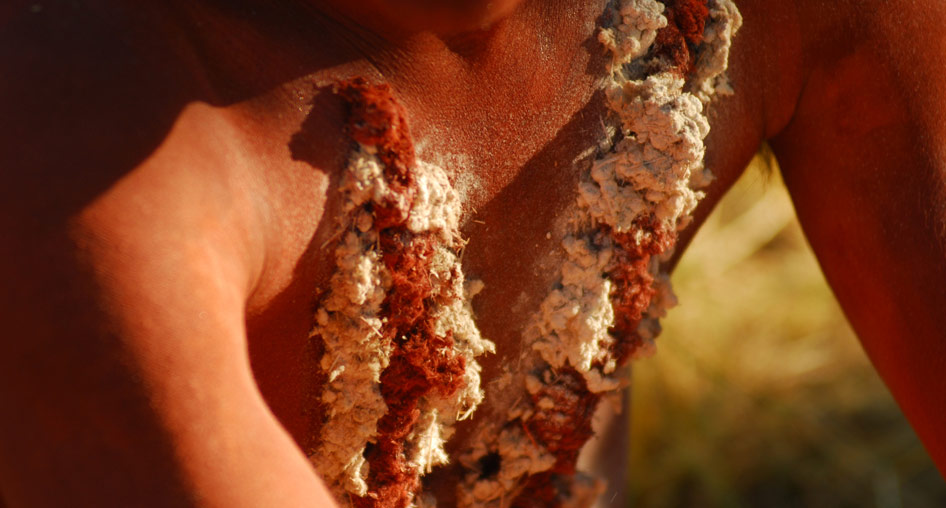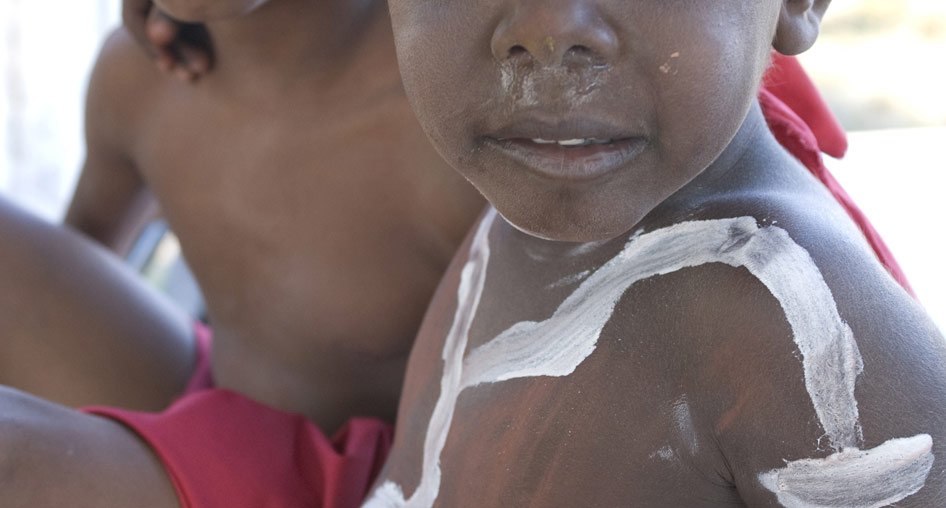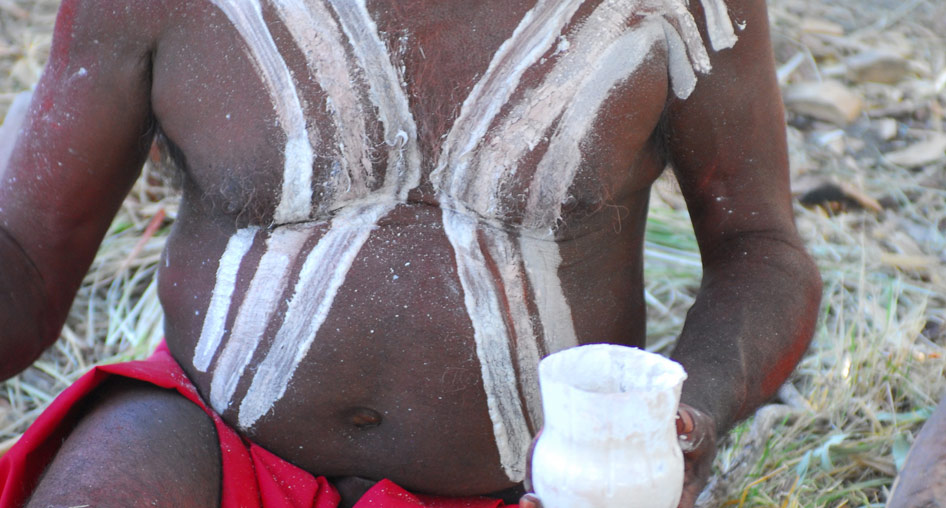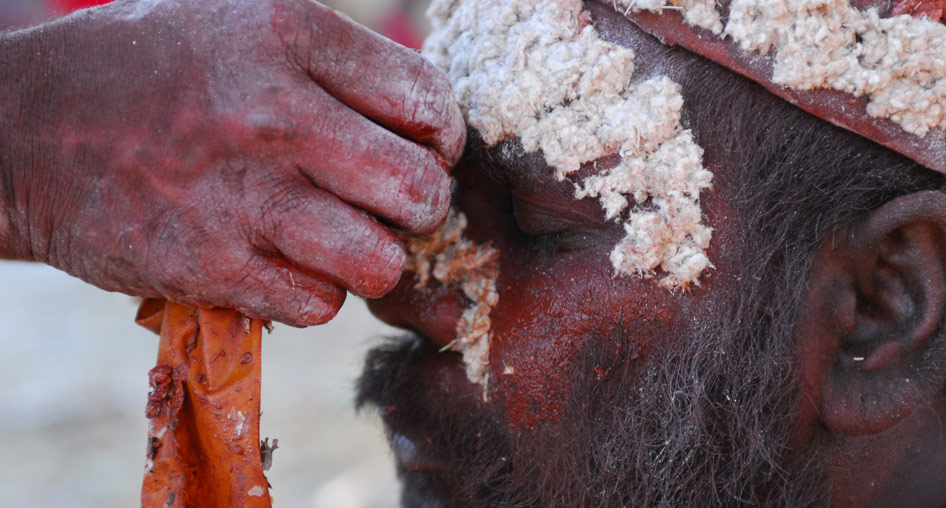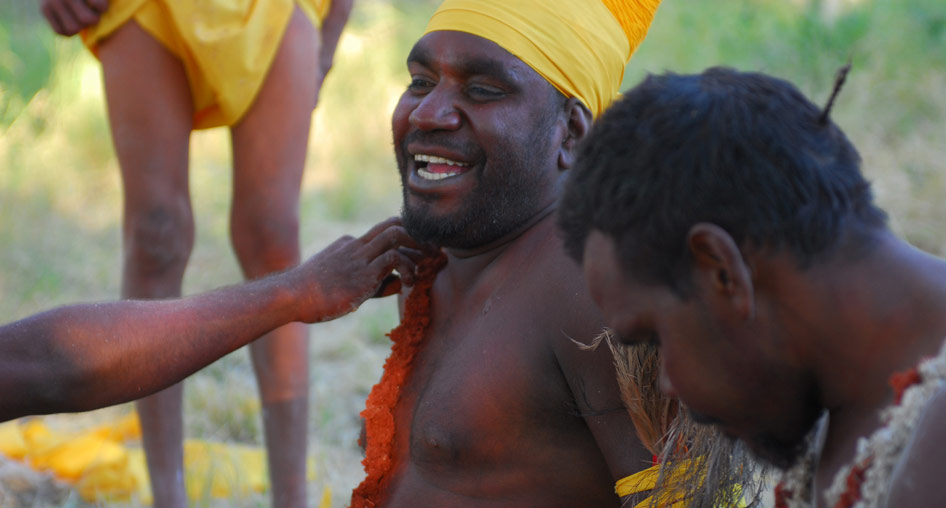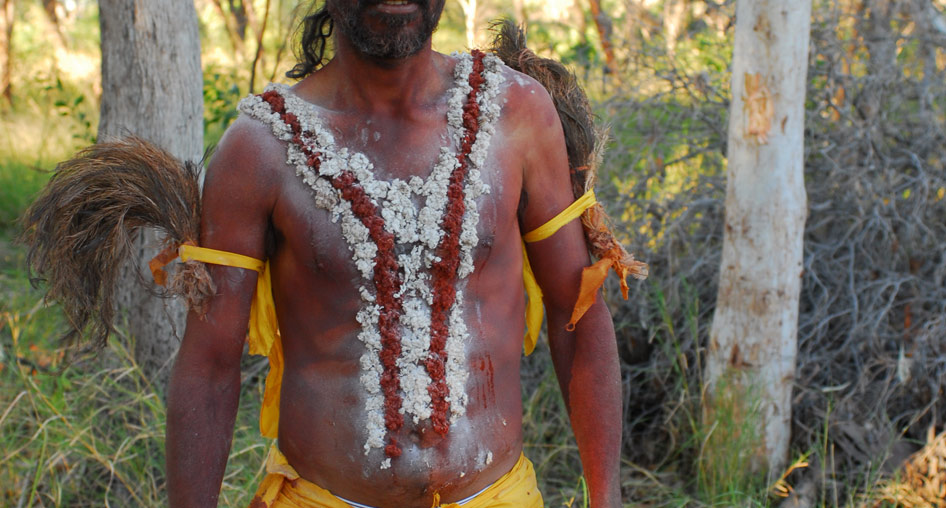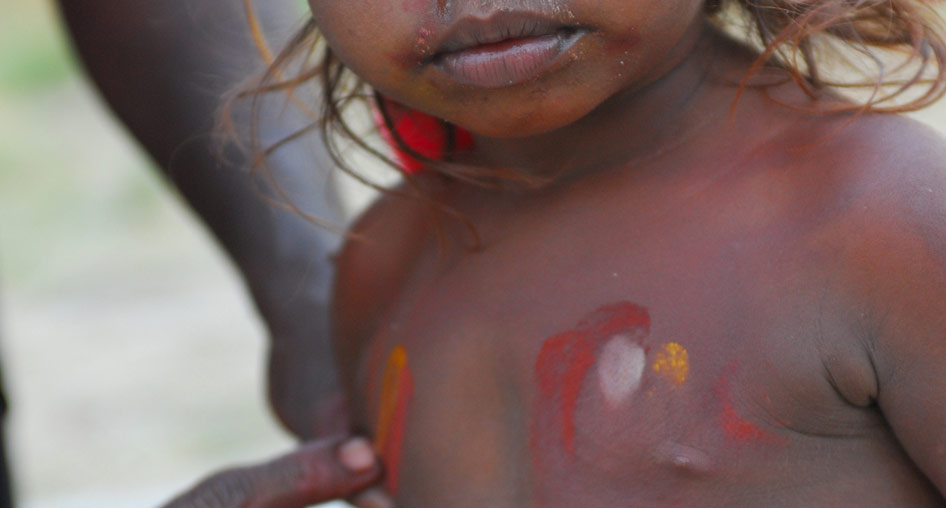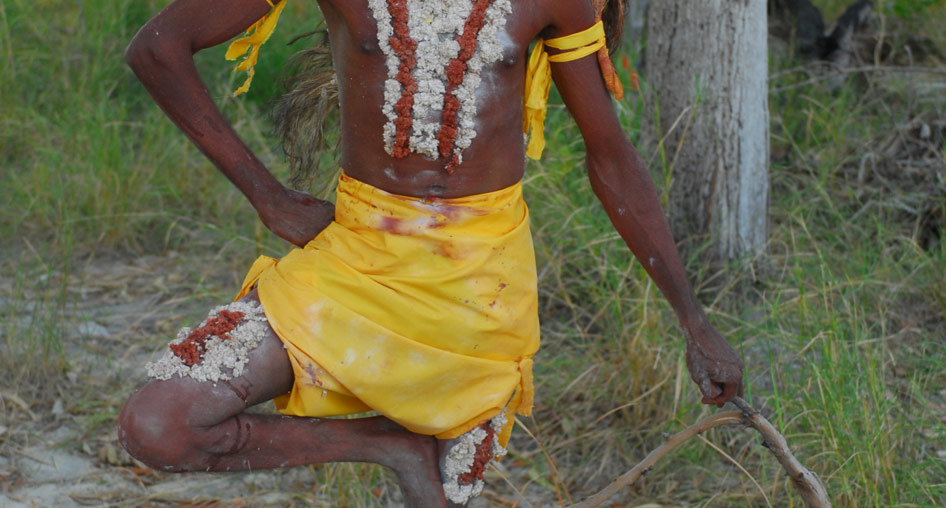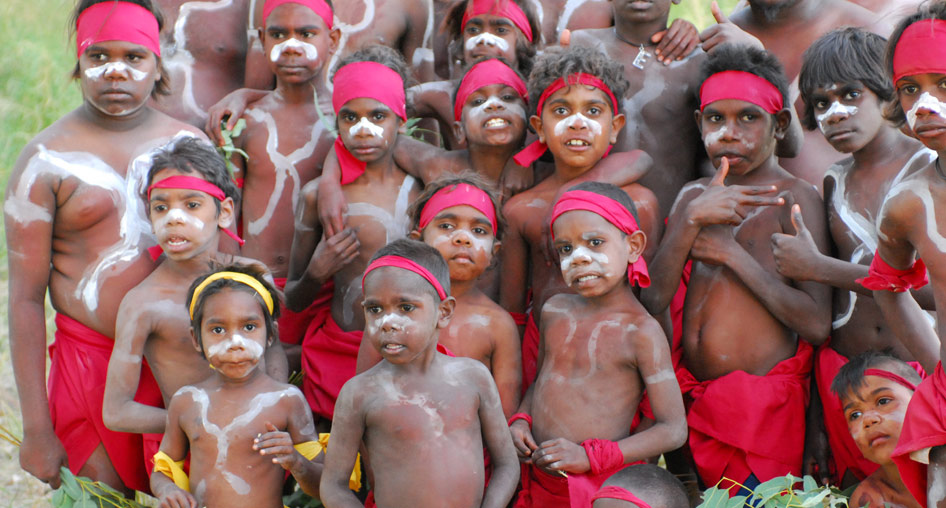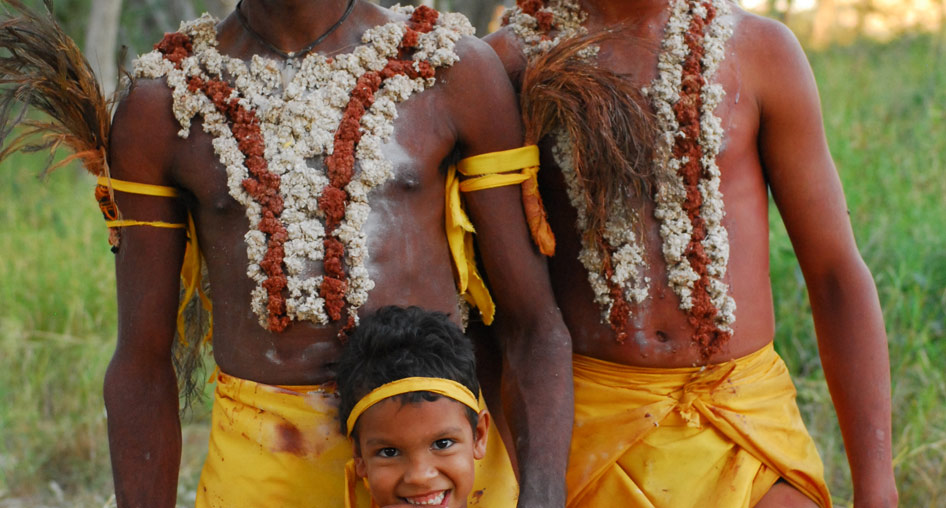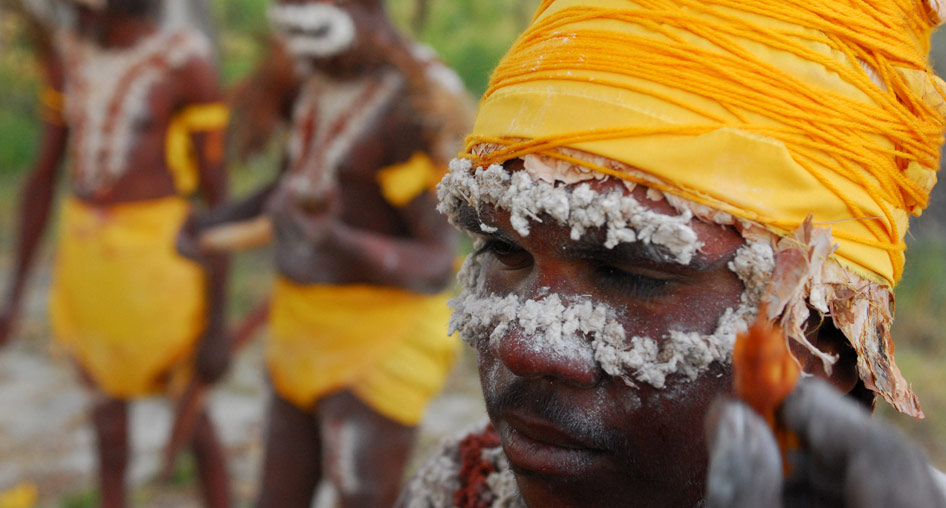NGUMPAN
It was good for young ones and old people. Old people were happy because all the young ones been dancing and learning artefact making and collecting materials for ceremony. They been passing down to their grandkids so they can carry on that dancing. Dancing is the easy part, what we need to do now is get them to learn the songs for the dances… What I liked about that workshop was the young ones, the young kids, they were all humbugging me for dancing and making boomerang, they been waiting for us in town to take them out there. We go from generation to generation: from old people to our generation, and from me to younger generation. It made the old ones happy too to see their grandkids, sons and daughters up there dancing. The young boys felt proud dancing in front of all their countrymen and different people from all over the Kimberley, and it made old people and me proud too.
Putuparri Tom Lawford, 2008
The Ngumpan workshop, which took place at Ngumpan Community east of Fitzroy Crossing in late 2008, revolved around the intergenerational transfer of cultural knowledge, and was one of the most transformative events of the project. Senior Ngurra artist Ned Cox, who had led the very first bush trip to Jilji Bore, was the instigator of this event. Coordinated by cultural advisor and senior translator Putuparri Tom Lawford, Ned and other senior men and women taught teenagers and children carving and ceremonial skills, and passed on the knowledge of important dances and body decoration to both young people and adults.
Four dances were performed by new generations at the Ngumpan workshop: little boys danced Kurtal, young men performed Majarrka and girls performed Mangamanga, all for the first time. One important ceremonial dance, Kaningarra, was revived for the first time in many years following the death of its custodian. The dance for Kaningarra, which is now Well 48 on the Canning Stock Route, was passed down to a new generation of Kaningarra people by elders from closely related areas.
